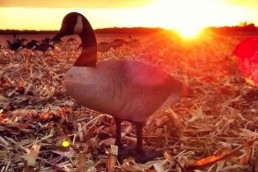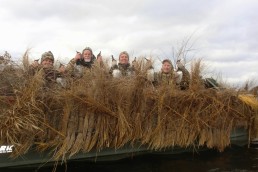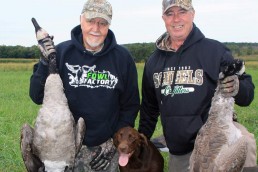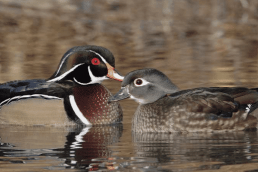Getting the Most Out of Your Duck and Goose Decoys
SHARE THIS POST
Depending on just where you live in the Midwest, the early duck and goose season this year looks to be a good one. With excellent hatches of birds reported up north in the region, the numbers available this season looks promising. Add a good population of local birds and it looks even better.
Now we know Mother Nature can throw a wrench in that prediction to alter the overall southern migration. Also, over the years it has been noted that duck and goose populations have somewhat strayed from their traditional flyway routes they’ve used in the past and have diverted. Despite these variables, a successful hunting season can be had.
Hopefully by now you have been scouting the areas you intend to duck and goose hunt this year. This is very important since many early-season hunters wait until the last minute and choose areas not ideal for a successful hunt. You need to scout early and utilize your chosen area to its full potential. To make this happen, using your duck and goose decoys to their fullest potential is key.
With your setup, decoy placement is one of the most overlooked tasks. Many fail to realize this step can make or break the birds’ attraction to your spread you’ve laid out. The visual picture for birds is extremely important, and they on are on very high alert. They will shy off in a moment’s notice if everything doesn’t look just right to them. They’re smart enough that they will break off their landing before they get into shooting range. With this in mind, there are steps to properly set your decoy spread in the water for efficient results.
When it comes to decoy spreads, I use a method that has worked for years. When setting out my decoy spreads, I’ll make it a point to set much smaller spreads early in the season than the ones later on. During the early part of the season, it’s not uncommon to find vast majority of birds hunted are what I call “resident” or “local” birds. These have been born and raised locally and tend to reside in that area year-round. When hunting these resident ducks or geese, they will have a tendency to fly in much smaller groups than the ones migrating through the area later with the onset of more consistent, fall-like weather patterns. It’s important to note this so that when you’re setting your decoy spreads you don’t overuse the total number of decoys. For these smaller flocks, use smaller decoy spreads and try and match those flocks in your area too. These birds will tend to avoid an area if they feel it is not “natural.”
Location is another factor that can make a difference in a bird hunt. If you’re hunting them over a body of water, it’s pretty obvious that you’ll want your decoys in the water. But don’t just throw a decoy here and there. When setting a spread in the water make it a point to set the decoys so the birds land in close enough for a good, clean shot. Don’t spread them out too far from each other either. Too much space between each decoy section will fake, especially to the smaller flights. Instead, try and set them to resemble other, smaller groups of birds, just like the resident ducks and geese you’re hunting early in a season.
Are you enjoying this post?
You can be among the first to get the latest info on where to go, what to use and how to use it!
Once the season progresses and more migrating birds pass through the area, you can now add more decoys to your spread and distributed out wider to match the larger numbers in migrating flocks.
For you folks hunting near the feeding fields, it’s very important that you set your decoys correctly as well. A common mistake many hunters make is that they set their decoys directly in the field the ducks and geese are going to use to feed. Set them up on and along the edges of the field for best results. Also, standing decoys work much better than the sitting decoys in this scenario. The standing ones look much more natural, like birds on the feed.
Finally, make sure that whenever possible you get a good shot toward the downwind position. When the ducks and geese decide to make their landing into the area they will turn and land into the wind, if it is blowing.
Learning and using proper decoy placement is more than just tossing a few decoys in the water or a middle of a field and waiting for them to come on in. Improve your duck and goose hunts by taking the extra time to get the setup correct. You do this and you will see for yourself what a difference it makes.
Email your outdoors questions to Mike Cyze at: lastcast13@yahoo.com. You can also check out his blog at: lastcastoutdoors.com or listen to him on ESPN Radio.
MWO
SHARE THIS POST
Did you enjoy this post?
You can be among the first to get the latest info on where to go, what to use and how to use it!
Mike Cyze
Mike Cyze has been called one of the most knowledgeable multispecies river anglers in the country. His ability to catch fish under the challenging conditions encountered in the river environment, combined with his overall fishing knowledge, has earned him recognition as a true Mississippi River Expert. Contact him at: lastcast13@yahoo.com.



